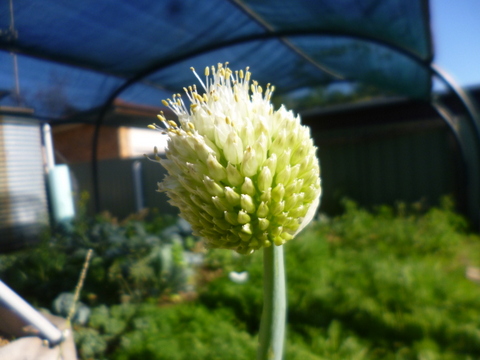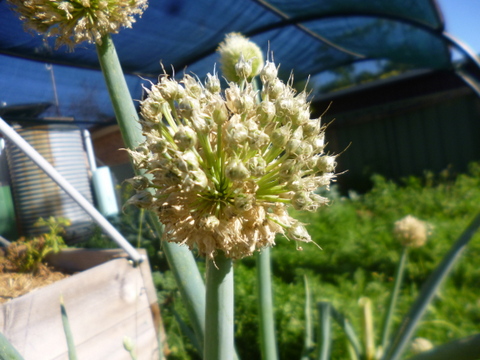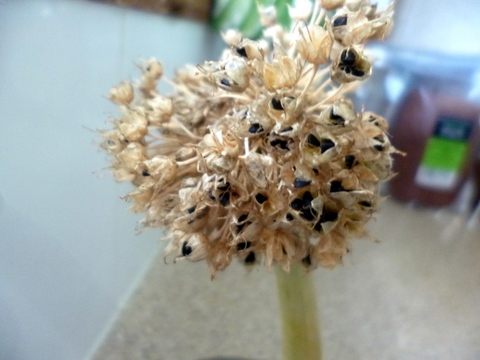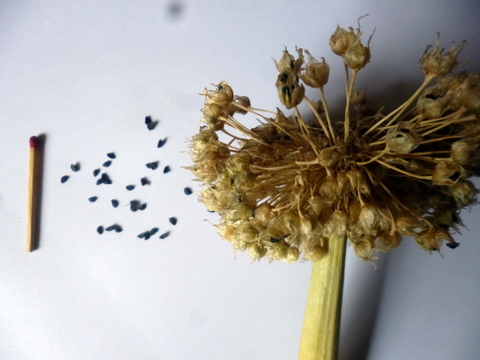Seed Saving - Onion Tribe
Created: 2017-12-20 01:56:58
The “Onion tribe” (also referred to as the Alliacaeae family) includes onions, spring onions, leeks, shallots and garlic. The family are biennial, putting their growth into the bulbs in the first year, then sending up flower stalks in the second year. Varieties which are being grown for seed should be no closer than 400m from eachother. Garlic, of course is propagated vegetatively by planting cloves from the previous years crop rather than by seed.
The onion tribe are insect pollinated and, as usual, only the best specimens should be used to save seeds from, thereby ensuring you are continuing to improve the strain you are growing, so make sure they are firm, not squishy (technical term).
To save your onion tribe seed, allow your plants to flower (the more you can let do this, the better will be the genetic diversity), the flowers develp at the end of their tubular green leaves. The leaves may require staking to keep them upright. The seeds will be ripe enough to harvest when the leaf becomes brownish and the seeds are black. Not all of the flowers will have ripened seeds at the one time so you will need to keep an eye on them. Once the flowers are ripe cut them from the plant and place them in a paper bag to dry fully, and place the bag in a cool, dry space.
To remove the seeds from the seed heads, rub them between your hands over a bowl or sheet of paper. This will result in a mix of seed, seeds capsules and stems being removed from the seed head. To separate the seed use a sieve the right size to allow the seeds through while retaining the trash, or place in a bowl and gently blow the trash away, leaving the seed behind.
Onion tribe seeds will remain fertile from two to three years. Onion seed is also used as an ingredient in Indian cooking under the name of kalongi or kalonji



